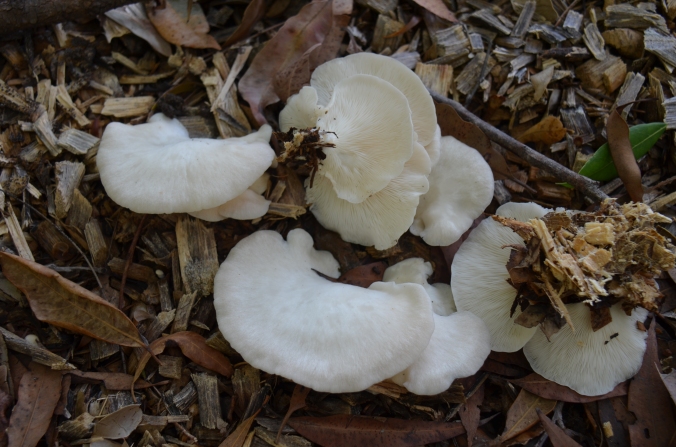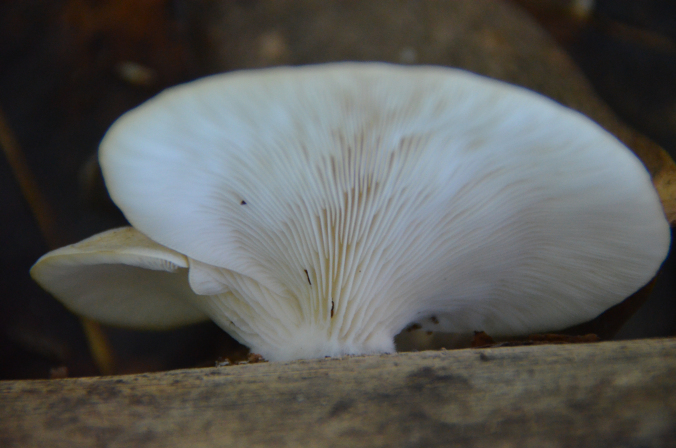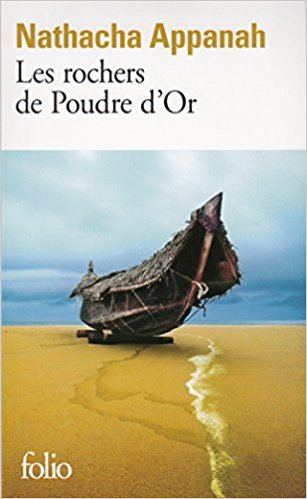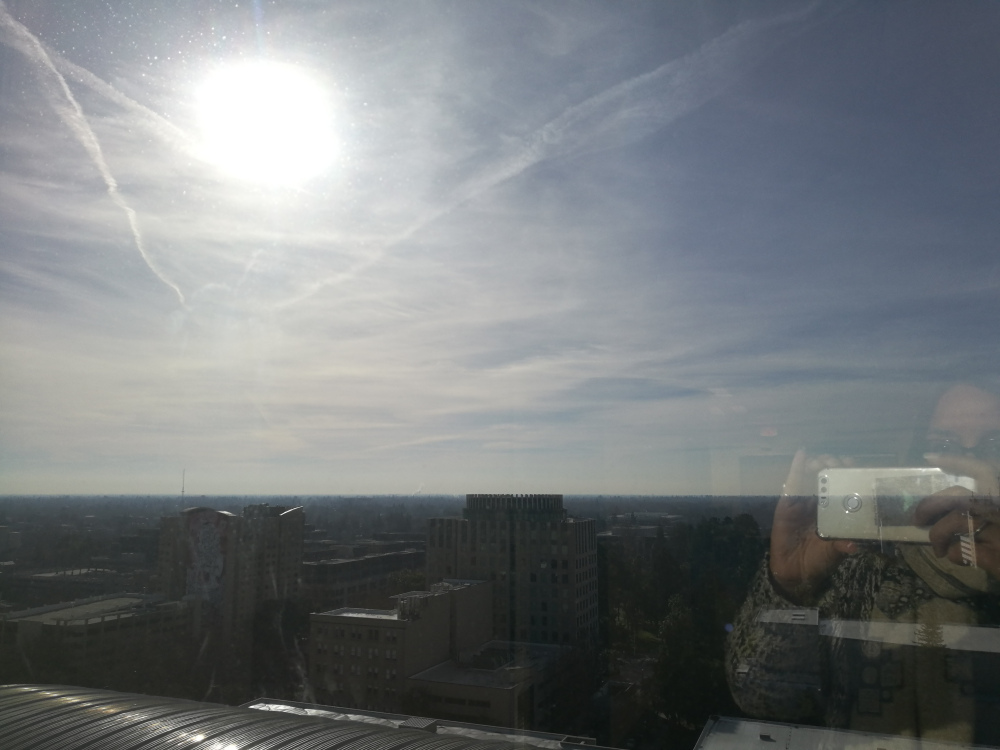
Perhaps Pleurotus djamor var djamor growing on a dead bangalow palm in the rain forest.
I often find these small to medium oyster mushrooms growing on dead wood or wood chips, I also find this same species or a similar one growing deep in the rain forest on dead bangalow palms. This leads me to believe that its a native species as weeds and introduced species very rarely penetrate our pristine rain forests. If it is pleurotus ostreatus then its also possible that the variety on wood chips is feral. Either way the resemblance of the two? species is very clear. This is another one on the list to DNA as I guess its the best way to see if there is a genetic difference. Queensland mycological society has this or another similar species as Pleurotus djamor var djamor.

Pleurotus sp. growing on wood chips at the north coast botanic garden
It has taken me quite some time to become competent in telling the difference between pleurotus and the more common glowers, omphalotus nidiformus which are toxic to humans. Omphas have a woody stem often darker in colour, they also have colour on the top of the cap, ranging from yellow to purple, grey to black. They also glow in the dark. though sometimes the glow is very very faint and can only be seen in complete darkness. Because omphas have so many different morphs its easy, at least it was for me, to become convinced that the glower is an oyster. Once I ate some ompalotus nidiformus because I had decided it must be an oyster mushroom. Lucky for me my rule about only eating a small amount cooked came into play and I was only mildly affected. It was a good Lesson to learn and now I am more careful.

detail of the decurrent gills and fine white fluffy hairs at the stem base.
The cap of these oyster mushrooms is white to grey or cream, its not viscid. The flesh is thin and rubbery, there is little if any stem and the gills are decurrent, often tho not always running all the way to the stem base where there is fine white fluffy hair, this stem base will readily regrow mycelium onto corrugated cardboard. The spores are white or cream. This pleurotus species is just one of a cluster of native and introduced species in Australia. I most often find these mushrooms in spring and summer.
Fried in oil with a pinch of salt these mushrooms taste great, they have a slightly chewy texture. These are also a mushroom that i have been able to regrow from stem butts. To have a look at all my oyster mushroom shots follow this link
Advertisements Share this:





